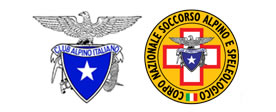
This manual collects the results of experiences consolidated in twenty
six years of field activity of the Cave Diving CNSAS Commission and represents,
to the best of our knowledge, the first contribution in this sector.
The
work, published in paperback, is divided into about two hundred pages and
illustrated with hundreds of color images. The
book is organized into eighteen chapters, including an original and articulated
bibliography that analyzes different specific topics.
From
historical notes, useful not only to trace the history of the Commission but
also to understand the evolution of cave diving theory and techniques, the manual
goes on discussing the reference context and the issues associated with
the different types of underground environments in which the Commission has operated and is
expected to intervene. Following
are issues regarding cave diving planning and operating procedures to be adopted
in complex operations and rescues. The
gas mixing techniques, the preparation of the gases used for diving and their monitoring
are the subjects of the later chapters.
A
large space is devoted to preliminary notions that any potential Cave Dive
Rescue technician must know. This
is followed by two topics about the diseases related to diving operations
and to the specific physical training.
The following notions about standard materials are enriched by considerations on
the use of underwater vehicles and rebreathers in cave diving
rescue operations.
Finally,
a chapter is devoted to communications within the cave. Those are critical because
through them passes the whole management of the rescue activity and of the necessary options. Discussion
of the organizational standard during rescue operations, considerations about management and responsibilities of the different actors conclude the
manual.
National School of Cave Diving Rescue technicians






